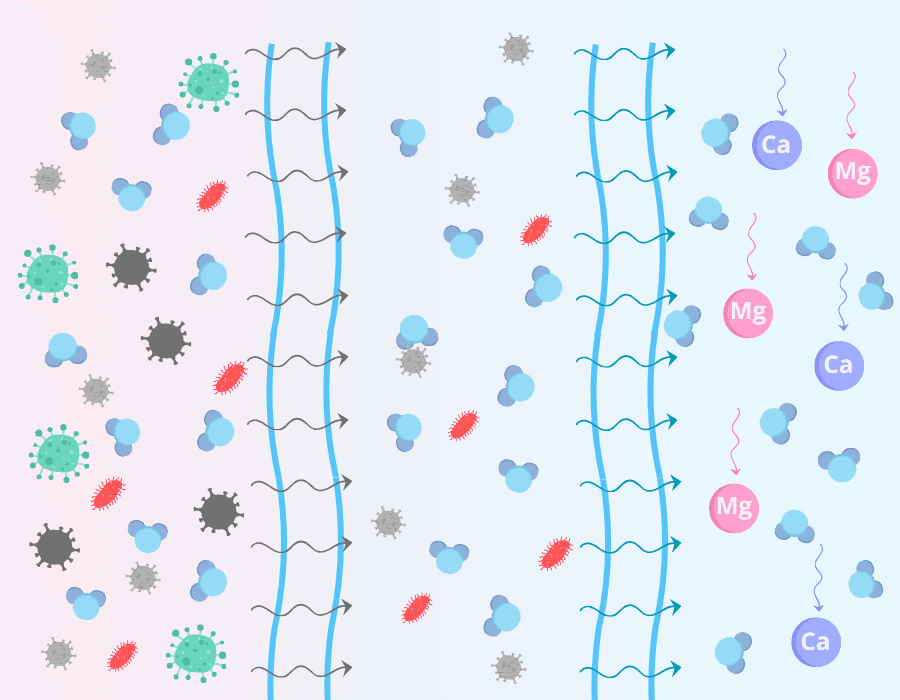
Reverse Osmosis: How It Works and When You (Don’t) Need It at Home
Reverse osmosis (RO) is a water treatment method capable of removing even microscopic and potentially harmful substances—such as nitrates, heavy metals, pesticides, bacteria, viruses, or pharmaceutical residues. It’s used not only in households but also in laboratories, hospitals, and industry.
Think of having juice full of seeds, pulp, and coloring, but you only want the pure liquid.
First, you pour it through a coarse strainer (removing seeds), then a finer one (removing pulp), and finally through an ultra-fine filter (removing even the tiniest particles invisible to the eye).
This is how reverse osmosis works—multiple filtration stages, each removing a different type of impurity.
Pre-filters – Capture sand, rust, turbidity, chlorine, and unpleasant odors (usually 2–3 stages).
Osmotic Membrane – The main ultra-fine filter that lets only water molecules pass while blocking bacteria, viruses, heavy metals, nitrates, and chemical residues.
Wastewater Outlet – Everything the membrane blocks is flushed into the drain.
Post-treatment / Mineralization – Optional stage to improve taste and restore minerals lost during filtration.
Nitrates
Heavy metals (lead, arsenic, cadmium…)
Chlorine and pesticides
Bacteria and viruses
Turbidity and odors
Microplastics and pharmaceutical traces
Assurance of water quality
Preparing infant formula
Sensitive individuals and allergy sufferers
Well water or poor-quality tap water
Regions with high levels of nitrates or pesticides
Water becomes mineral-free (solved with a mineralizing cartridge)
Some water is wasted during filtration
Higher initial cost, but low maintenance expenses
Well water
Presence of heavy metals, pesticides, or other contaminants
Maximum purity for children, cooking, tea, coffee, aquariums, or laboratory use
For better taste → pitcher filter / faucet filter
For softening → water softener
For slight improvement → carbon filter
Summary: Reverse osmosis is a multi-stage filtration system that delivers exceptionally pure and safe water. It’s not necessary for everyone, but in areas with problematic water, it’s one of the most effective and reliable solutions.